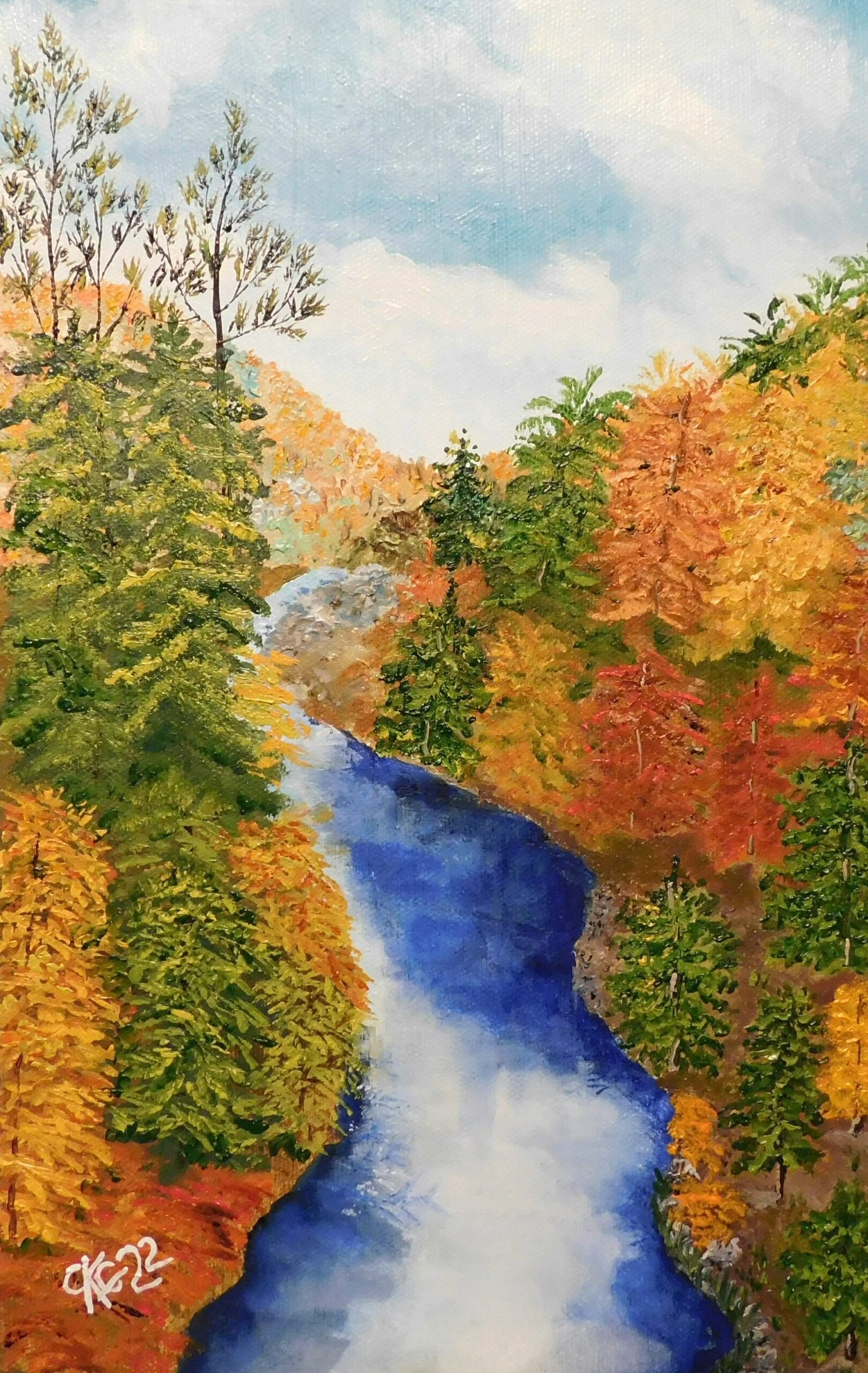
Artistic activity has long been recognized as a powerful tool for unlocking creativity. Whether you consider yourself an artist or not, engaging in artistic endeavors can have a profound impact on your ability to think creatively and generate new ideas. In this blog post, we will explore how artistic activity can help unlock your creativity and provide practical tips for incorporating art into your daily life.
One of the key ways in which artistic activity unlocks creativity is by allowing you to tap into your subconscious mind. When you engage in art, whether it’s painting, drawing, sculpting, or any other form, you enter a state of flow where you are fully present in the moment. This state of flow allows your mind to wander and explore new ideas, often leading to unexpected insights and connections.
Additionally, artistic activity provides a unique opportunity for self-expression. Through art, you can communicate your thoughts, emotions, and ideas in a visual and tangible way. This process of self-expression not only helps you gain a deeper understanding of yourself, but it also allows you to explore different perspectives and viewpoints. By stepping into the shoes of others through art, you can expand your creative thinking and develop empathy.
Moreover, artistic activity encourages experimentation and risk-taking. When you engage in art, there are no right or wrong answers. You are free to explore different techniques, materials, and styles without the fear of judgment or failure. This freedom to experiment fosters a mindset of curiosity and openness, which are essential for creative thinking. By embracing the unknown and taking risks in your artistic pursuits, you train your brain to think outside the box and come up with innovative ideas.
Furthermore, incorporating art into your daily life can help you develop a habit of creativity. Just like any other skill, creativity requires practice and consistency. By setting aside time each day or week for artistic activity, you are training your brain to think creatively on a regular basis. This habit of creativity will extend beyond your art practice and permeate other areas of your life, allowing you to approach challenges with a fresh perspective and find creative solutions.
To incorporate art into your daily life, you don’t need to be a professional artist or invest in expensive art supplies. Simple activities like doodling, coloring, or even arranging flowers can serve as a creative outlet. The key is to make art a part of your routine and give yourself permission to explore and create without judgment.
In conclusion, artistic activity is a powerful tool for unlocking creativity. By engaging in art, you can tap into your subconscious mind, express yourself, experiment, and develop a habit of creativity. So, why not pick up a paintbrush, grab a sketchbook, or try your hand at pottery? You never know what creative wonders you might discover.
Art and creativity go hand in hand, each feeding off the other to create a harmonious and dynamic relationship. When you engage in artistic activities, you are not only tapping into your imagination but also exploring new ideas and concepts. Art provides a platform for self-expression, allowing you to communicate your thoughts and emotions in unique and unconventional ways.
The process of creating art encourages you to think outside the box and push the boundaries of what is considered conventional. By experimenting with different materials and techniques, you are able to explore new possibilities and discover innovative ways of expressing yourself. This freedom of self-expression is essential for personal growth and development.
Moreover, engaging in artistic activities stimulates the brain and activates different areas associated with creativity. When you immerse yourself in the creative process, you are utilizing both the logical and intuitive parts of your brain. This integration of different cognitive processes allows for a holistic and balanced approach to problem-solving and idea generation.
Art has been shown to enhance cognitive abilities such as critical thinking, problem-solving, and pattern recognition. By engaging in artistic activities, you are training your brain to think in new and unconventional ways. This can lead to improved cognitive flexibility, allowing you to adapt to new situations and come up with creative solutions.
Furthermore, art has the power to inspire and evoke emotions in both the creator and the audience. It has the ability to transcend language and cultural barriers, connecting people on a deeper level. Through art, we can explore complex and abstract concepts, allowing us to gain a deeper understanding of ourselves and the world around us.
In conclusion, art and creativity are deeply intertwined. Engaging in artistic activities not only allows us to tap into our imagination but also stimulates our brain and encourages innovative thinking. Through art, we can express ourselves in unique and unconventional ways, fostering personal growth and development. Art has the power to inspire, connect, and transform, making it an essential part of the human experience.
Benefits of Artistic Activity
Engaging in artistic activity offers numerous benefits beyond just unlocking your creativity. Here are some of the key advantages:
1. Stress Relief and Relaxation
Artistic activity can serve as a form of therapy, providing a much-needed escape from the stresses of everyday life. Creating art allows you to focus your mind on the present moment, promoting mindfulness and relaxation. The process of creating can be meditative and soothing, helping to reduce anxiety and promote overall well-being.
2. Self-Discovery and Self-Expression
Artistic activity allows you to explore your inner thoughts, emotions, and experiences. Through art, you can discover new aspects of yourself and gain a deeper understanding of your own identity. By expressing yourself creatively, you can communicate ideas and feelings that may be difficult to put into words, providing a powerful outlet for self-expression.
3. Problem-Solving and Critical Thinking
Engaging in artistic activity requires you to think critically and solve problems. Whether you are choosing colors for a painting, experimenting with different compositions, or figuring out how to bring your vision to life, art challenges you to think outside the box and find creative solutions. These problem-solving skills can be transferred to other areas of your life, helping you approach challenges with a fresh perspective.
4. Enhanced Observation Skills
Creating art encourages you to observe the world around you more closely. Whether you are sketching a still life, capturing the essence of a landscape, or photographing everyday objects, art trains your eye to notice details and appreciate the beauty in the ordinary. This heightened observation can enhance your ability to notice patterns, make connections, and generate new ideas.
5. Increased Confidence and Self-Esteem
Engaging in artistic activity can boost your confidence and self-esteem. As you create art and see your skills improve over time, you develop a sense of accomplishment and pride in your abilities. Art provides a tangible representation of your progress, reminding you of your creative potential and encouraging you to continue exploring and experimenting.
6. Social Connection and Community
Artistic activity can also foster social connection and a sense of community. Whether you join a local art class, participate in a community art project, or share your artwork online, art provides opportunities to connect with others who share your passion. Through art, you can engage in meaningful conversations, exchange ideas, and collaborate with like-minded individuals. This sense of belonging and connection can contribute to your overall well-being and provide a support network of fellow artists.
7. Cognitive Development
Engaging in artistic activity can also promote cognitive development. Creating art requires you to use your imagination, think critically, and make decisions. These cognitive processes stimulate your brain, promoting neural connections and enhancing cognitive function. Artistic activity has been linked to improved memory, attention span, and problem-solving skills, making it a valuable tool for cognitive development and lifelong learning.
8. Emotional Healing and Resilience
Artistic activity can be a powerful tool for emotional healing and building resilience. Through art, you can explore and process complex emotions, such as grief, trauma, or stress. Creating art allows you to externalize and express your emotions in a safe and non-judgmental way, providing a cathartic release. This process can help you gain a sense of control over your emotions, promote emotional well-being, and build resilience in the face of adversity.
9. Cultural Appreciation and Understanding
Engaging in artistic activity can deepen your appreciation and understanding of different cultures and artistic traditions. Whether you explore traditional art forms from around the world, learn about the history of art, or engage with contemporary artists from diverse backgrounds, art provides a window into different cultures and perspectives. This exposure can broaden your horizons, challenge your assumptions, and cultivate empathy and understanding towards others.
10. Personal Growth and Lifelong Learning
Artistic activity is a lifelong journey of personal growth and learning. As you engage with different art forms, experiment with new techniques, and explore various mediums, you continuously challenge yourself and expand your creative horizons. Artistic activity encourages a growth mindset, where you embrace mistakes as opportunities for learning and view challenges as stepping stones towards improvement. This mindset extends beyond art and can positively impact other areas of your life, fostering a love for learning and a willingness to take risks.
6. Create a Dedicated Art Space
Having a dedicated space for your artistic activities can greatly enhance your creative process. Set aside a corner of your home or a room where you can keep your art supplies organized and easily accessible. This designated space will serve as a constant reminder to make time for art and provide a peaceful environment where you can fully immerse yourself in your creative pursuits.
7. Set Goals and Challenges
Setting goals and challenges can help you stay motivated and focused on your artistic journey. Whether it’s completing a certain number of artworks in a month or experimenting with a new technique, having something to work towards can push you to explore new possibilities and push your artistic boundaries. Break down your goals into smaller, manageable tasks, and celebrate each milestone you achieve along the way.
8. Practice Mindfulness through Art
Engaging in artistic activities can be a form of mindfulness practice. When you create art, focus your attention on the present moment and immerse yourself fully in the process. Pay attention to the colors, textures, and sensations involved in your artistic endeavor. This mindful approach can help you relax, reduce stress, and cultivate a sense of calm and clarity.
9. Use Art as a Form of Self-Care
Art can be a powerful tool for self-care and self-expression. Use your artistic activities as a way to process emotions, reflect on your experiences, and nurture your mental and emotional well-being. Allow yourself the freedom to explore your thoughts and feelings through your art, and let it serve as a therapeutic outlet for self-discovery and personal growth.
10. Make Art a Priority
Lastly, make art a priority in your life. Just as you prioritize other activities and responsibilities, carve out dedicated time for your artistic pursuits. Treat it as an essential part of your self-care routine and commit to making art a regular practice. By making art a priority, you will not only reap the benefits of artistic expression but also cultivate a deeper connection with your creative self.
